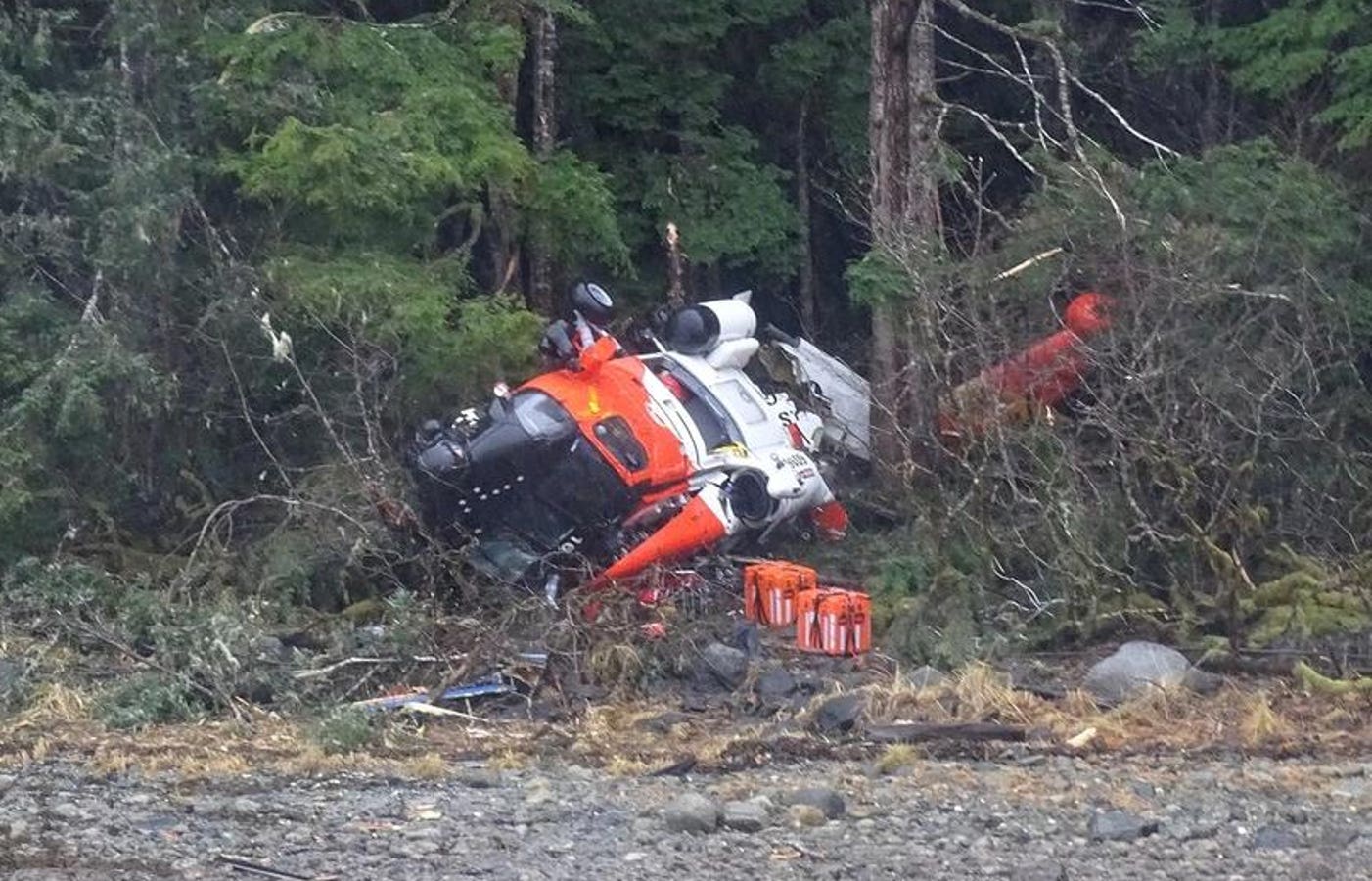In a surprise move, the U.S. Coast Guard abruptly cut the service life of their MH-60T Jayhawk Medium Range Recovery Helicopters from 20,000 hours to 19,000. As a result, six high-hour aircraft were immediately grounded, taken out of service in mid-August. If the Jayhawk’s service-life adjustment is permanent, the Coast Guard’s already stressed helicopter fleet will soon face serious operational challenges.
The Coast Guard, in a statement, confirmed the helicopters were taken out of service, saying that it “anticipates no immediate impacts on search and rescue capabilities.” But with the Coast Guard’s helicopter air wing already stretched to the breaking point, grounding any fraction of the Coast Guard’s current fleet of around 48 Sikorsky-built MH-60T helicopters poses a serious problem for the Coast Guard.
With emergency conversations still ongoing between the Coast Guard and Sikorsky, the flight hour cut may prove to be a temporary safety “hold.” But, if the 19,000-hour service life is not quickly adjusted back upward, returning to the original 20,000-hour target, the Coast Guard risks running out of operable MH-60T airframes at a time when the Service needs them most.
With an aging, bare-bones air wing, the Coast Guard has few options. By late 2023, over 90 percent of the Coast Guard’s fleet of MH-60T helicopters were operating with over 16,000 flight hours. Each Jayhawk chalks up somewhere around 800 flight hours a year—and with the remaining still-flyable airframes expected to operate more, filling in for the already-grounded helicopters—the Coast Guard’s high-hour MH-60T fleet will deplete itself in a big hurry. The Coast Guard’s only other helicopter, the aging and far smaller MH-65 Dolphin, is getting phased out, so there’s no backup for the beleaguered Service.
To recover, the Coast Guard may be forced to adjust their long-planned, penny-pinching effort to rebuild their existing high-hour MH-60T aircraft.
As a chronically underfunded agency, the Coast Guard has, for years, touted a low-cost plan to run their MH-60T aircraft for 20,000 hours, gradually rebuilding each high-hour MH-60T helicopter, enabling the aircraft to run for thousands of additional hours. But now, with the surprise cut in service life, the Coast Guard’s convoluted and penny-pinching Jayhawk recapitalization effort—a necessity to keep from busting the Coast Guard’s miniscule $13.8 billion budget—may be broken as well.
Hard-Used Fleet Shows Signs Of Strain:
The Coast Guard’s MH-60T helicopter fleet sees intensive use, and they are very reliable. However, over the past few years, the Coast Guard’s normally robust MH-60Ts have been showing signs of operational strain. In November 2023, a MH-60T crashed in Alaska while responding to a distress call from a fishing boat. Seven months later, in June, a different Coast Guard MH-60T helicopter suffered transmission issues and was forced to make an emergency landing West of Orlando, Florida.
While there is no indication that the abrupt service life cut is linked to the recent MH-60T mishaps, the surprise service life reduction is a sign that the Coast Guard, in their effort to save cash, is pushing their MH-60Ts to the brink. As Sikorsky’s long-held engineering models get tested by the Coast Guard’s unprecedented operational flight hour expectations, the helicopters can encounter new risks and experience otherwise unprecedented failures. The abrupt grounding may be an indication that something in the older, hard-run aircraft is threatening to break.
Put bluntly, funding constraints are pushing both the Coast Guard and Sikorsky into uncharted territory. Better-funded government agencies replace their H-60 helicopters far more often. The Navy, in 2003, celebrated extending the service lives of their H-60-based Seahawk fleet to 12,000 flight hours, up from 10,000. And, today, the Coast Guard, to save costs, is taking those Navy cast-offs and rebuilding them as MH-60Ts, fully expecting to run them for at least 8,000 more hours.
That plan may no longer work. Permanently reducing the MH-60T service life by 1,000 hours upends the Coast Guard’s delicately-balanced fiscal calculus, and may force the Coast Guard to buy new MH-60T hulls (a newly-manufactured “nose, cabin and aft transition structure”) from Sikorsky.
Even that step might not work, as the Coast Guard is also balancing industrial base constraints. Again, to save cost, high-hour Coast Guard MH-60Ts are being rebuilt around “fresh” hulls at the Coast Guard’s Aviation Logistics Center (ALC) in Elizabeth City, North Carolina. The aging facility—a former seaplane base—can only refit so many helicopters at a time and has very little capacity to accelerate the complex rebuilding efforts. With delays in the refit effort likely, Coast Guard leaders probably counted on Sikorsky to grant waivers, allowing the Coast Guard to operate the hard-used choppers beyond the already high 20,000 hour limit.
Of course, there’s an open question as to why the Coast Guard is going through such lengths to keep their aging helicopters in the air at all.
There’s no plan. The Coast Guard’s long-term rotary wing recapitalization effort is in complete disarray. Once pegged to the Army’s Future Vertical Lift Program, the Coast Guard was caught flat-footed after the Army picked the Bell V-280 Valor. That complex tilt-rotor platform is unlikely to meet the Coast Guard’s demanding rotary wing requirements, and, outside of new MH-60Ts, the Coast Guard has few viable options for the future.
With Polar Operations, hurricane response and other rotary-wing intensive tasks looming, it may well be time for Congress to read both the Administration and the Coast Guard the riot act, forcing the Department of Homeland Security to order enough newly-built MH-60T Jayhawks to fully refresh the Coast Guard’s stressed rotary wing force. The Coast Guard’s helicopters are vital, life-saving tools, and, rather than love them to death, it may be time to buy the penurious Service a new fleet of Jayhawk helicopters before the Blackhawk production line closes for good.
Read the full article here





